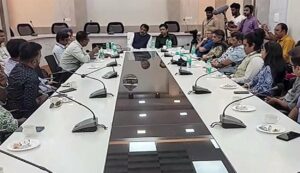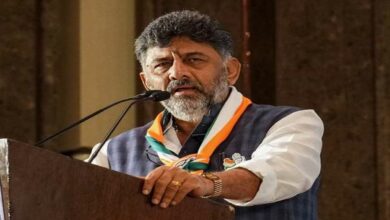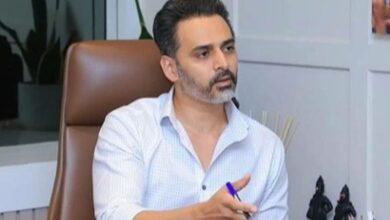UNICEF Team visits Bhadrak district of Odisha to review tsunami preparedness
In order to assess tsunami readiness, a UNICEF team headed by William Hanlon, Chief of Field Office, traveled to the Bhadrak area of Odisha with members from the Reliance Foundation, Kerala, Bangladesh, and Sri Lanka.

According to Hanlon, they went to the coastal regions and looked at mangrove plantings and other local initiatives aimed at constructing various barriers that may assist save the shoreline.
“We went to these coastal regions to see various projects, such as mangrove plantings, which are excellent, realistic efforts being made on the ground to help build various barriers that may assist save the shoreline. Additionally, it’s really to study and discuss the challenges, see the local communities and their readiness and response, and, I believe, learn and generate various ideas so that we can all work together,” he added.
Hanlon went on to say that their primary goal was to evaluate the government’s response to the catastrophe.
“To examine disaster risk reduction in this district’s coastal regions, we brought a team coordinated by the UN Resident Coordinator’s Office and the Reliance Foundation. We have visited the coastline regions as well as the districts of Balasore and Badrak.
The goal is to bring together our international participants, who come from Bangladesh and Sri Lanka, together with officials from the UN and Reliance Foundation, to examine potential solutions to assist alleviate the issues caused by calamities. We also visited Chandipur. We’re having a conference tomorrow. We’ll talk about these and other matters at a meeting in Bhubaneshwar and consider how to proceed,” he said.
Additionally, he informed the media that Odisha’s efforts following the 1999 supercyclone were praiseworthy.
“I believe that the goal of this was to see and witness the outstanding job that has been accomplished. This, in my opinion, serves as a model for India. Odisha, and this area in particular, has, in my opinion, made a lot of progress since the 1999 super storm. Therefore, the main goal is to bring that experience to the international arena, to the international participants who are present, and then to bring it all together at this conference where we can talk about various approaches to cyclone and other event preparedness and how we can record that and share it around the world,” he said.
According to Dilip Routrai, the Collector and District Magistrate of Bhadrak, the UNICEF team was putting the tsunami preparation plan into action.
“We are executing tsunami preparation after an international delegation headed by UNICEF visited the Bhadrak district of Odisha today. In one block, Basudebpur block, which is a coastal block of Bhadrak district, we have begun work in four villages that are particularly vulnerable to tsunamis. By this, I mean the team led by UNICEF, which included representatives from Bangladesh, Sri Lanka, and Kerala, as well as people from the Reliance Foundation.
They were interested in seeing how prepared the Bhadrak area was for tsunamis. Interacting with the people made them very pleased, and they also saw in the field how they would evacuate themselves in the event of a tsunami, which would be indicated by a siren. They would quickly flee for safety and seek refuge in safer areas in order to save the lives of those who were in danger.
After they returned, we had a final conversation with the extra district magistrate who accepted the award on behalf of our district on October 29, which is also State Disaster Reduction Day and National Disaster Preparedness Day,” he added.
According to Routrai, after the Dana cyclone, Chief Minister Mohan Charan Majhi congratulated the Bhadrak district.
Since it was just a few days after the Dana had hit our area, the Chief Minister also congratulated Bhadrak district on October 29. The extra district magistrate accepted the reward. Additionally, Tanmita Kaurav, our deputy collector, has been leading from the front, which made the whole staff extremely pleased,” he added.
The most significant aspect of the tour, he said, was the interaction with the people.
“What matters more is the contact with the people. Most importantly, there is a strong link between the district government and the populace. And that is the lesson they took away from us. During the wrap-up discussion, the main subject that was brought up was the need of multilateral cooperation, namely between the government and the non-government sector. Therefore, cooperation among all parties would undoubtedly aid in the preservation of valuable lives and assist individuals in coping with calamities such as tsunamis.”





